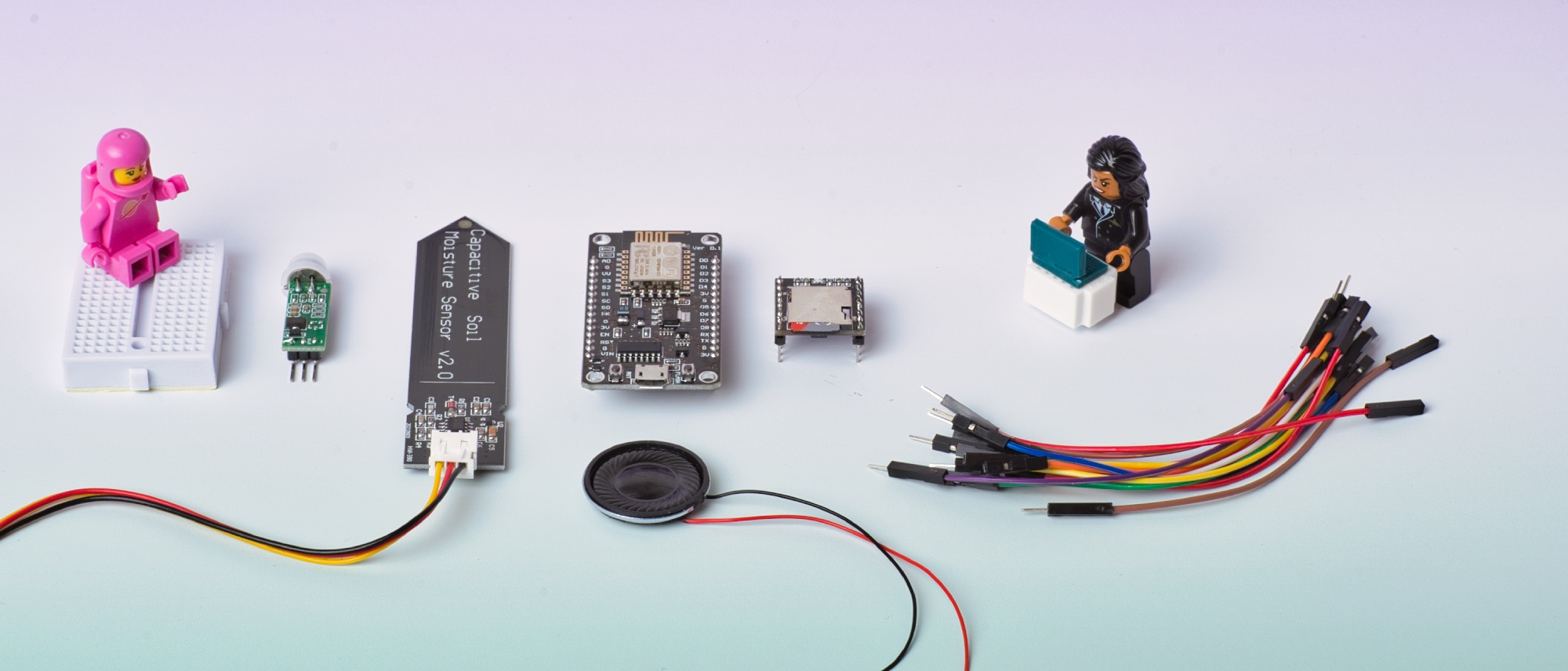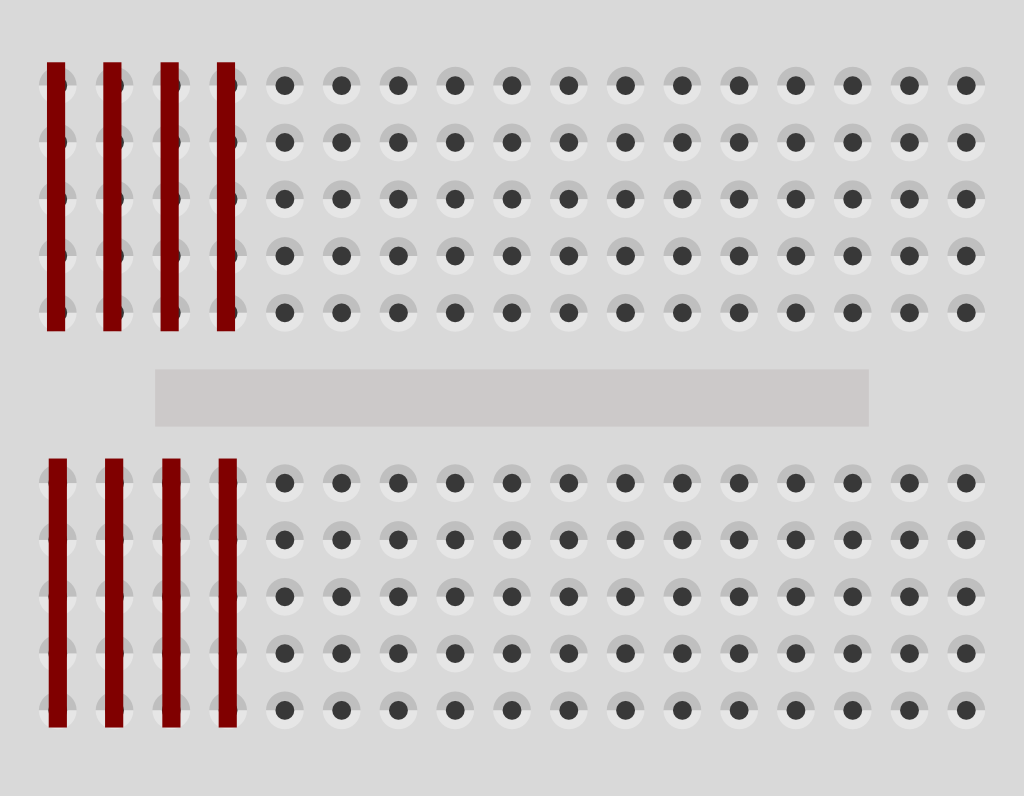Components
Components include electrical sources (power sources, voltage sources), conductors or cables, resistors, fuses, switches and light bulbs, diodes, and transistors.
Get all your materials ready:
| Quantity | Component |
|---|---|
| 1 | Motion sensor |
| 1 | Moisture sensor |
| 1 | Microcontroller |
| 1 | Speaker |
| 1 | DFPlayer module |
| 1 | USB cable |
| 10 | FF jumper cables |
| 10 | FM jumper cables |
| 10 | MM jumper cables |
| 1 | Breadboard |
| 1 | LED |
| 1 | MicroSD card |
| 1 | SD card reader |
| 1 | Laptop with power supply |
Additionally useful:
| Quantity | Component |
|---|---|
| 1 | Multimeter |
| 1 | Glass of water |
| 1 | Cloth for drying the sensor |
Sensors: Sensors are devices or circuits that are designed to convert a non-electrical input signal (such as temperature, light intensity, force, magnetic field strength) into an electrical output signal.
Actuators: Actuators convert electrical signals into mechanical motion or light.
Jumper Cables
- The cables you see here are called jumper cables, also known as jumper wires, and they are used to make connections between components without soldering.
- There are cables with different types of connectors (the plugs at the ends of the cable):
- MM - cable has connectors at both ends
- MF - has a connector at one end and a pin at the other end
- FF - has connectors at both ends
Breadboard
- A breadboard or solderless breadboard is excellent for creating temporary circuits and prototypes, as no soldering is required to build a circuit.
- This makes a breadboard reusable for multiple projects.
- Construction:
- Slots for inserting jumper cables
- Vertical conductive strips, often labeled with + and - signs, which serve as power rails.
- And as you can see in the photo below, it can come in different colors and sizes:
Microcontroller
- A microcontroller is an extremely small computer that is integrated onto a single chip, forming a complete self-contained system (including a central processing unit (CPU), memory, input and output pins, and other components).
- It is abbreviated as MCU, which stands for Microcontroller Unit.
- It requires additional program code to perform meaningful tasks.
Technical Specifications
-
Operating Voltage: 3.0 - 3.6 V
-
Important Pins (some may appear multiple times):
- 3V - Power supply for components that require 3V
- G - Ground (also labeled as GND on the microcontroller)
More about the microcontroller will be covered in the programming section later.
Quiz
What do we use sensors for?
What gets simplified when using a breadboard?





